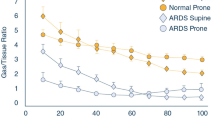Abstract
Background
Current recommendations for evaluation and safe discharge of penetrating chest trauma patients regarding pneumothorax (PTX) include a Chest X Ray (CXR) at the Emergency Department (ED) upon arrival and second CXR after 3 h if the first one is negative.
Purpose
To compare CXRs taken at the first and third hours of ED arrival and evaluate a 1 h period of observation instead of 3 h for safe discharge of patients with penetrating chest trauma.
Methods
In this cross-sectional study, all asymptomatic patients with penetrating chest trauma referred to a level 1 trauma center with negative initial Postero-Anterior (PA) CXRs (hour 0) were enrolled. Those with intoxication, tube thoracostomy, chest computed tomography, evidence of abdominal penetration, an overall elapsed timed of more than 1 h for admission to the ED, and refusal to take part in the study were excluded. Patients underwent subsequent PA CXRs at hours 1 and 3. A phone call follow up after 24 h was organized for each patient.
Results
A total of 68 patients were enrolled. There was 100 % concordance among CXRs performed at hours 1 and 3 in the study population. None of the patients showed clinical deterioration or PTX in CXR at hour 1 if remained asymptomatic during the first hour of observation.
Conclusion
Asymptomatic patients with penetrating chest trauma, negative initial PA CXR, no signs of intoxication, and no deterioration during the first hour of observation may be considered for discharge. Further evidence is required to make recommendations based on these findings.

Similar content being viewed by others
References
Wright FL, Esposito TJ. Penetrating trauma to the chest. In: Di Saverito S, Tugnoli G, Catena F, Ansaloni L, Naidoo N, editors. Trauma surgery. Milan: Springer; 2014. p. 275–94.
Fagenholz P, Velmahos G. Surgical treatment of thoracic trauma: lung. In: Di Saverito S, Tugnoli G, Catena F, Ansaloni L, Naidoo N, editors. Trauma surgery. Milan: Springer; 2014. p. 77–90.
Bukur M, Green DJ. Plain X-rays for penetrating trauma. In: Velmahos GC, Degiannis E, Doll D, editors. Penetrating trauma. Berlin: Springer; 2012. p.93–100. doi:10.1007/978-3-642-20453-1_13.
American College of Surgeons. Advanced trauma life support for doctors, student course manual. 9th ed. Chicago, IL: ACS; 2012.
Mollberg NM, Wise SR, De Hoyos AL, Ju Lin F, Merlotti G, Massab MG. Chest computed tomography for penetrating thoracic trauma after normal screening chest roengenogram. Ann Thorac Surg. 2012;93(6):1830–5.
Nandipati KC, Allamaneni S, Kakarla R, Wong A, Richards N, Sattefield J, Turner JW, et al. Extended focused assessment with sonography for trauma (EFAST) in the diagnosis of pneumothorax: experience at a community based level I trauma center. Injury. 2011;42(5):511–4.
Ku BS, Fields JM, Carr B, Everett WW, Gracias VH, Dean AJ. Clinician-performed ultrasound for the diagnosis of traumatic pneumothorax. West J Emerg Med. 2013;14(2):103–8.
Ball CG, Kirkpatrick AW, Feliciano DV. The occult pneumothorax: What have we learned? Can J Surg. 2009;52(5):E173–9.
Moore FO, Goslar PW, Coimbra R, Velmahos G, Brown CVR, Thomas B Jr, et al. Blunt traumatic pneumothorax: is observation safe? Results of a prospective AAST multicenter study. J Trauma. 2011;70(5):1019–25.
Plurad D, Green D, Demetriades D, Rhee P. The increasing use of chest computed tomography in trauma: is it being overutilized? J Trauma. 2007;62(3):631–5.
Eckstein M, Henderson SO. Thoracic trauma. In: Marx JA, Hockberger RS, Walls RM, Biros MH, Danzl DF, Gausche-Hill M, Jagoda A, et al., editors. Rosen’s emergency medicine. 8th ed. New York: Elsevier Saunders; 2014. p. 431–58.
Shatz TV, De la Petraja J, Erbella J, Hameed M, Vail SJ. Efficacy of follow-up evaluation in penetrating thoracic injuries: 3 vs 6 hour radiographs of the chest. J Emerg Med. 2001;20(3):281–4.
Seamon MJ, Medina CR, Pieri PG, Fisher CA, Gaughan JP, Bradley KM, et al. Follow up after asymptomatic penetrating thoracic injury: 3 hours is enough. J Trauma. 2008;65(3):549–53.
Berg RJ, Inaba K, Recinos G, Barmparas G, Teixeira PG, Georgiou C. Prospective evaluation of early follow-up chest radiography after penetrating thoracic injury. W J Surg. 2013;37(6):1286–90. doi:10.1007/s00268-013-2002-0.
Weigelt JA, Aurbakken CM, Meier DE, Thal ER. Management of asymptomatic patients following stab wounds to the chest. J Trauma. 1982;22(4):290–4.
Shorr RM, Crittenden M, Indeck M, Hartunian SL, Rodrguez A. Blunt thoracic trauma: analysis of 515 patients. Ann Surg. 1987;206(2):200–5.
Dalla Palma L, Grisi G, Cuttin R, Rimondini A. Digital vs conventional radiography: cost and revenue analysis. Eur Radiol. 1999;9:1682–92.
Lai KW-S, Langlois S, Le P. A comparative study of a digital radiography system. Aust Radiol. 1999;43(2):197–200.
Colin C, Vergnon P, Guibaud L, Borson O, Pinaudeou D, Perret Du, Cray MH, et al. Comparative assessment of digital and analog radiography: diagnostic accuracy, cost analysis, and quality of care. Eur J Radiol. 1998;26(3):226–34.
Author information
Authors and Affiliations
Corresponding author
Ethics declarations
This study was approved by the Institutional Review Board of Kerman University of Medical Sciences and performed in accordance with declaration of Helsinky. Since this study involved a single CXR in addition to the standard of care (the hour 1 CXR), a statement was added to the consent form of the patients, including the translation of the following announcement into Persian: “This study involves radiation exposure from a chest X-ray. As part of everyday living, everyone is exposed to a small amount of background radiation that comes from the environment you live in. The radiation dose you will receive in this study is about the amount that you receive over 3 days from background radiation. The risk from this dose is small. This radiation exposure is not necessary for your medical care but is necessary to obtain the research information desired.”
Conflict of interest
Latifeh Seidzadeh Gooklan, Alireza Yari, Masoud Mayel, Mitra Movahedi, Sarir Nazemi, and Amirhossein Mirafzal report no conflicts of interests.
Rights and permissions
About this article
Cite this article
Seidzadeh Gooklan, L., Yari, A., Mayel, M. et al. Observation period for asymptomatic penetrating chest trauma: 1 or 3 h?. Eur J Trauma Emerg Surg 44, 829–833 (2018). https://doi.org/10.1007/s00068-015-0623-8
Received:
Accepted:
Published:
Issue Date:
DOI: https://doi.org/10.1007/s00068-015-0623-8




